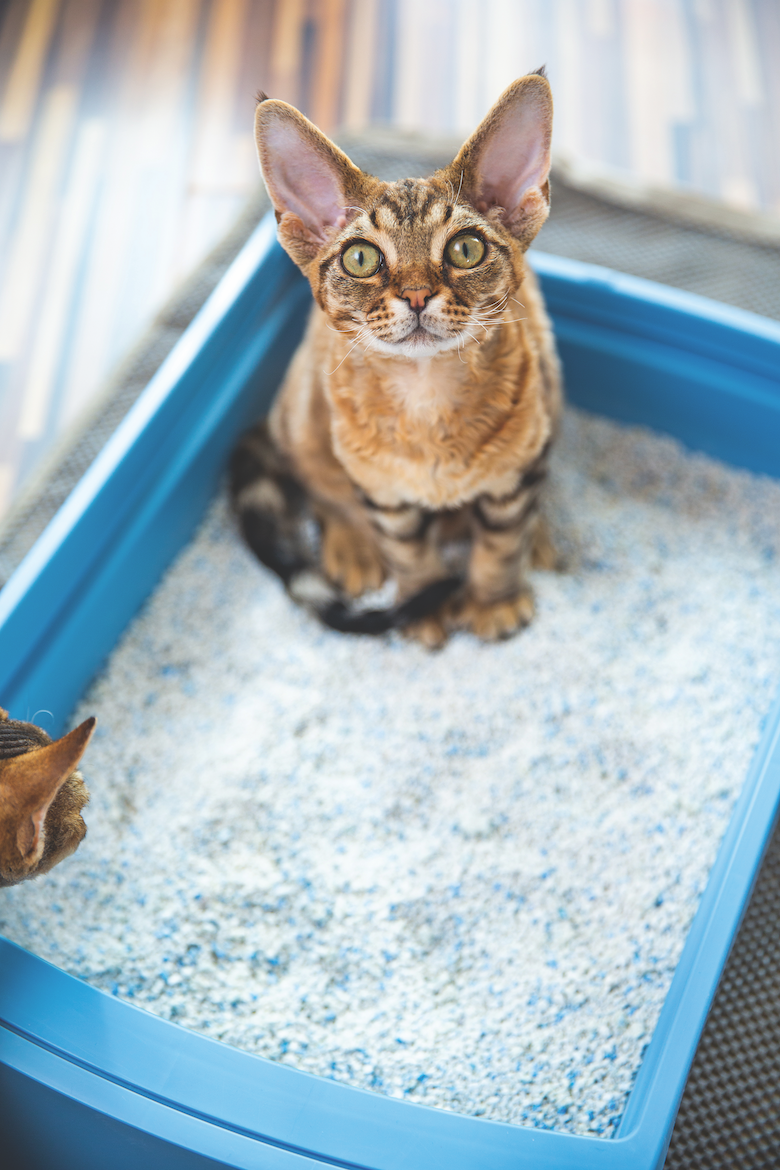Litter box problems are among the most frustrating issues for cat owners. The good news is, by following a few tried-and-true guidelines, you can set your cat up for a lifetime of good litter-box habits.
“I’ve always felt like the term ‘litter training’ is a little bit of a misnomer because cats are naturally clean animals who want to cover their waste,” says Hannah Shaw, the Kitten Lady,” kitten rescuer, humane educator and author of the book Tiny But Mighty. “All we have to do is create the right circumstances for them to succeed.”
The key is to make the litter box easy for your cat to find and inviting to use. “The instinct to bury or hide waste, as well as not eliminating near sleeping or eating areas, is instinctual for cats,” says Jessica Watson, team lead — Cat World, certified animal training and enrichment professional with Best Friends Animal Society. “Most of the time, cats will gravitate to a litter box.”
Ready to be trained? As your cat’s human, these litter box training tips are musts.
Get the right size
Cats want to be comfortable when they are going to the bathroom (don’t we all?). Adult cats need a big box: at least one and a half times their length. For kittens, it’s OK to start out with a large box, but one with a low side or ramp for easy access. Keep the litter level somewhat shallow (about 2 inches deep).
Have enough litter boxes
The more boxes you have, the more likely that your cat will use them. This is especially important in multi-cat homes. Have one box per cat, plus one extra for good measure, and place them in different parts of the house.
Select the right location
Place boxes in quiet areas a short distance from where your cat spends most of her time. Humans like to keep litter boxes in out-of-the-way spots, but if the box is too far away, or located in a loud or scary place like the laundry room or garage, your cat might choose to eliminate somewhere else. “If the litter box is the closest and best option for covering her waste, she will choose it,” Hannah says.
Related: Tips for Choosing the Right Litter Box and Litter Box Location

Photo: CasarsaGuru | Getty Images
Choose the right litter
Many types of cat litter are available. Some cats will use anything, but others are more particular. A safe bet is to use an unscented, soft, clumping litter. If you want to experiment, put the new litter in one box and the old in another and see if your cat has a preference.
Use enough litter
Some cats like to dig deeply when burying their waste. Start with 2 to 3 inches of litter, but add more if your cat frequently digs bare patches in the bottom of the box.
When litter box training make sure to introduce the box properly
When you first bring home a new kitten, take her straight to the litter box and put her in so she knows where to find it. Reinforce this by taking her back a few times a day for the first few days.
“If you catch your kitten in the act of going outside the box, pick her up and relocate her to the box,” Jessica says. “Then she can finish her business in the proper place.”
Hannah recommends restricting kittens to a smaller space at first so they don’t have to search high and low to find a box. “Eliminate other areas that might appeal to the kitten’s desire to cover her waste, like piles of laundry on the floor,” she says.
Scoop daily
Since cats are naturally clean animals, it’s not surprising that they don’t like using a dirty box. (Think of you how feel when you find an unflushed toilet!) Scoop solid material from the box at least once a day. Twice a day is even better.
Deep clean weekly
Every week, dump all the litter and wash the box well with soap and water. Dry completely, then refill it with fresh litter. Alternatively, use plastic litter box liners — simply toss the bag and litter weekly, then replace with a new bag and fresh litter.
Deal with accidents the right way
“If you find the mess after the fact, the only thing you can do is clean it up,” Jessica says. “If you try to scold the [cat or] kitten, he won’t know why you are upset. Animals live in the moment.” If it’s poop, Jessica recommends picking it up and placing it in the box because cats are more inclined to eliminate in a place where they see or smell poop and pee.
Hannah recommends taking note of where the accident happened to figure out what the cat is telling you. “If you’ve put the box in the center of a wall, and the kitten pees in the corner, she’s telling you, ‘I would prefer my box to be in the corner,’” she says. “If she poops in a room that doesn’t have a box, she might be telling you she needs more boxes.”
Seek veterinary advice when litter box training
If your cat is going outside the litter box, always get her checked out by your vet. “If a cat who normally uses the litter box starts eliminating inappropriately it is often a warning sign of a medical or emotional issue,” Jessica says.
Give kitty time
When you consider how long it takes to potty-train human babies, litter training a kitten is a breeze. “Kittens typically can learn to use the box fairly quickly, maybe up to a month,” Jessica says. “Remember to be patient.”
A few mistakes don’t mean she’s not getting the idea. The same holds true for an adult cat getting used to a new home and new litter box arrangement. If you’ve followed the golden rules, your cat is likely to adjust quickly.
Featured Image: arayuschij | Getty Images
